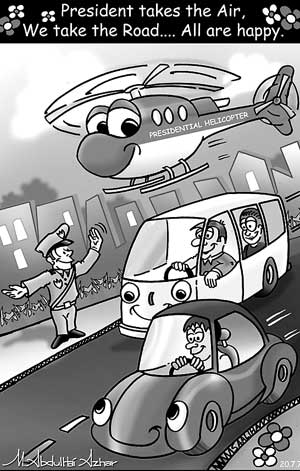
Crown jewel and the presidential tourRecognising the crown jewel The museum portrays the entire history of the plantation workers, their trials and tribunals, their lifestyles, culture and ethics. The history of the tea worker began in the 19th century when the first batch of workers was shipped to Ceylon from South India by British planters. Since then these Indian immigrants have toiled for this country and continue to do so without much upliftment and recognition. They are very much like the migrant worker in whose name the government, job agent, banker, immigration officer and other connected agencies benefit – except for the worker. Life is however changing in the estates with the much maligned line rooms making way for more comfortable detached and attached housing for workers, uniforms at work, baby care centres, health and education facilities being among other facilities. But a lot more needs to be done. The efforts of this South Indian workforce as part of an economy that has survived as a leading export and continues to do some nearly two centuries later shouldn’t be forgotten. This Tea Museum and the rich heritage that it portrays should get the blessings of the entire tea industry, the government and all other stakeholders. The ISD must be further congratulated for implementing a project with a good governance model – without seeking the financial support of the estate company where the Museum is located. “We didn’t want to seek financial support from the estate until we’re able to show results. It is only once this project is a success that we’ll seek some support,” said ISD Chairman P. Muthulingam. A noble thought indeed. Whatever it is hats off to the ISD for initiating such a project that now requires the support and recognition of all sections of society. The role of the plantation worker cannot easily be forgotten and in this sense the Museum serves as a lasting memory of their recognition and the valuable contribution they have made so far to the country’s most valuable crop.
Tour - de - Air Critics would probably hurl a few brickbats at Rajapaksa for his costly use of a helicopter to travel within the city. The Sunday Times FT however welcomes this move and believes he may have taken a cue from our editorial last month when we suggested that it would be far more cost effective to the economy if VVIPS who need heavy security fly to venues instead of taking the road. In our editorial on June 14 which partly dealt with traffic chaos, we wrote: “Isn’t it cheaper in terms of the loss to the economy by way of fuel costs to the public, wastage of time and loss of productivity for the Defence Secretary to travel by helicopter between his Stanmore Crescent residence and the Defence Ministry using the Police grounds and the army grounds for landing purposes?” Presidential travel within the city in a helicopter is no doubt a costly exercise but the traffic chaos, snarls and road closures when VVIPS are on the roads are ever costlier to the motorist, bus passenger, pedestrian and the country at large in terms of time, money and fuel imports. A comprehensive research study on the cost to the country in terms of road closures will no doubt show that the use of helicopters for VVIPS would be much cheaper to the state and the country in many ways – in the context of road closures for 15-20 minutes. There is no doubt Rajapaksa has to travel and in this context we trust the President would use air travel if possible in all his internal travels. It puts less strain on the security apparatus too. |
|
||
| || Front
Page | News
| Editorial
| Columns
| Sports
| Plus
| Financial
Times | International
| Mirror
| TV
Times | Funday Times|| |
| |
Copyright
2007 Wijeya
Newspapers Ltd.Colombo. Sri Lanka. |
